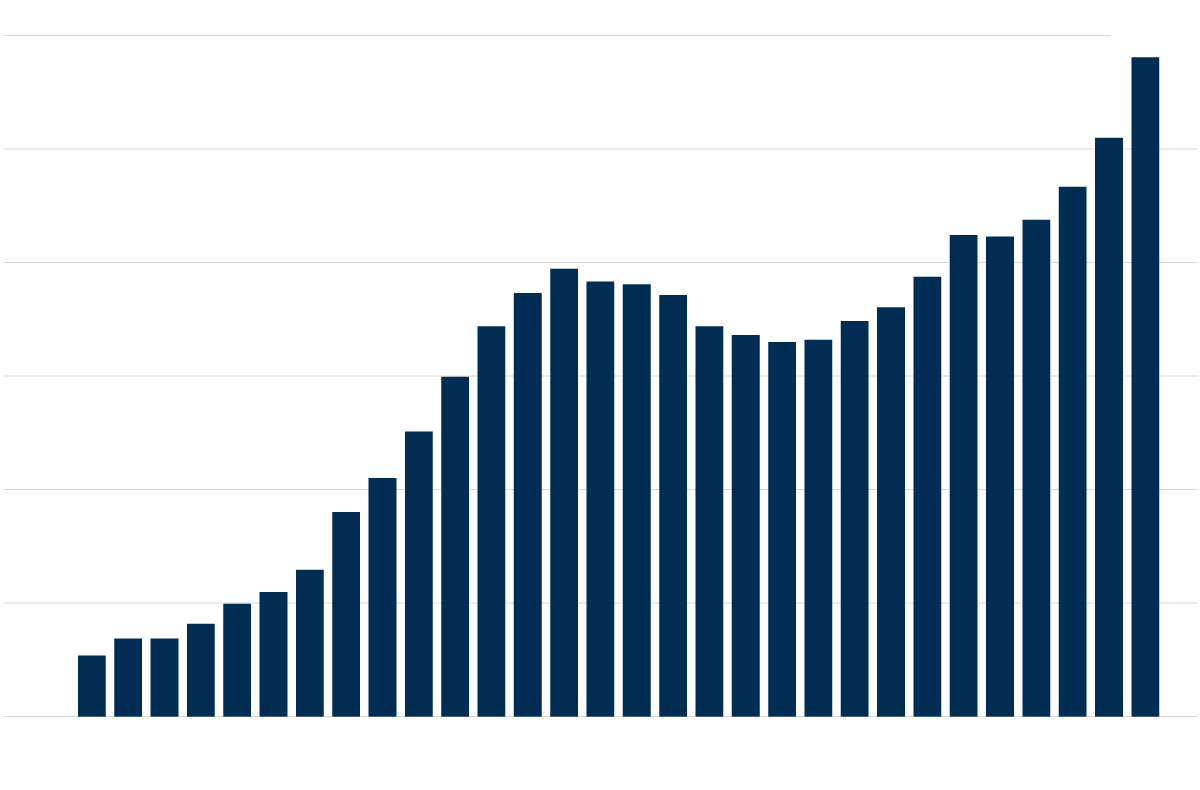Migrants' boost to the economy: since 2018, they have filled 97% of new jobs.
The population born outside of Spain now represents 29% of Catalan workers, according to a study by the UAB.


BarcelonaImmigration has become one of the fundamental pillars of the Catalan labor market, sustaining economic growth in a context of aging and the loss of the native working-age population. Between 2018 and 2024, according to data from the Active Population Survey (EPA) of the National Institute of Statistics (INE), of the 450,000 new jobs—that is, jobs that did not previously exist—created in Catalonia, nearly 97% were filled by people born outside of Spain. This is explained in the study. Demographic transition, immigration, and aging in Catalonia 2024-2050 Prepared by Josep Oliver, professor of applied economics at the Autonomous University of Barcelona, and presented this Tuesday at the College of Economists of Catalonia.
His research emphasizes that "without this absolutely extraordinary contribution" from immigration, and taking into account the country's productive structure, the rise in the Catalan gross domestic product (GDP, the indicator that measures the size of an economy) or in Spain's public revenue in recent years "would not have been possible." "These are figures that simply reflect a reality that has been known for years: for the receiving country, immigrants are a bonus", explains Oliver. In his definition of immigrant, the academic only considers people born outside of Spain and residing in Catalonia, regardless of their nationality, excluding phenomena such as people with dual nationality or those who access a naturalization process after residing in the country for a period of time.
Thus, the economist asserts that foreign workers now account for more than 29% of all employment in Catalonia, compared to just 3% in 1995. It's important to note that the majority of people from outside Spain—currently 25% of the population—arrive at working age. In 2024, of the nearly two million immigrants residing in our country, 44.3% were between 25 and 34 years old.In regions such as Barcelonès, this percentage is already around 59% of the total number of people of this age, and in others such as Segarra (49%), Alt Empordà (47.6%) or Garrotxa (47.1%), it also exceeds the Catalan average.
This strong growth in immigrants in Catalonia has precisely offset the decrease in working-age natives. between 2000 and 2025, while in the 15-44 age group there has been a loss of more than 800,000 people in the Spanish-born population; nearly one million migrants in this age group have been gained (800,000 of them between 25 and 44 years old).
As Oliver explains, this lack of native-born workers has also translated into an increase in the proportion of immigrants in certain jobs, especially in sectors that require lower levels of training and offer lower salaries. This explains the 55% of foreign-employed workers in the hospitality industry, 40% in recreational activities, 37% in construction, and 36% in food manufacturing.Such extraordinarily high figures suggest that large sectors of our economy simply could not function without the contribution of immigration," the economist emphasizes.
Macro benefits and micro tensions
For Oliver, from a macroeconomic perspective, "there's no discussion"; migration is an "enormous benefit." Even so, the academic warns that while GDP and the labor market have benefited from this boom, problems can also arise at the "micro" level. He refers, for example, to tensions in the housing market, the education system, and healthcare in those areas of Catalonia where the newly arrived population is most concentrated. In this regard, he proposes diverting more resources to these very areas to avoid the creation of a situation of "competition" with the natives, which fuels the discourse of the far right.
Given this scenario, Oliver also asks: how much demand for workers will Catalonia have in the future, and who will fill it? According to his calculations, in 2035 there will be a labor shortage of around 1.1 million employees. Likewise, on the same horizon, forecasts place the arrival of new immigrants between 1.5 and 1.8 million people.
Idescat predicts that within a decade, people born outside of Spain will make up more than 30% of the population, while the aging process will continue to increase. If we move to 2050, there will be one million more people aged 65 or over in the Principality (up to 2.5 million) and the number of people aged 85 or over will double to nearly half a million. "Nor more can be addressed in two ways: either with greater productivity, so that uncovered labor needs can be compensated, or by increasing more intensively clean entries for immigrants than what the Idescat scenarios predict," concludes Oliver.




